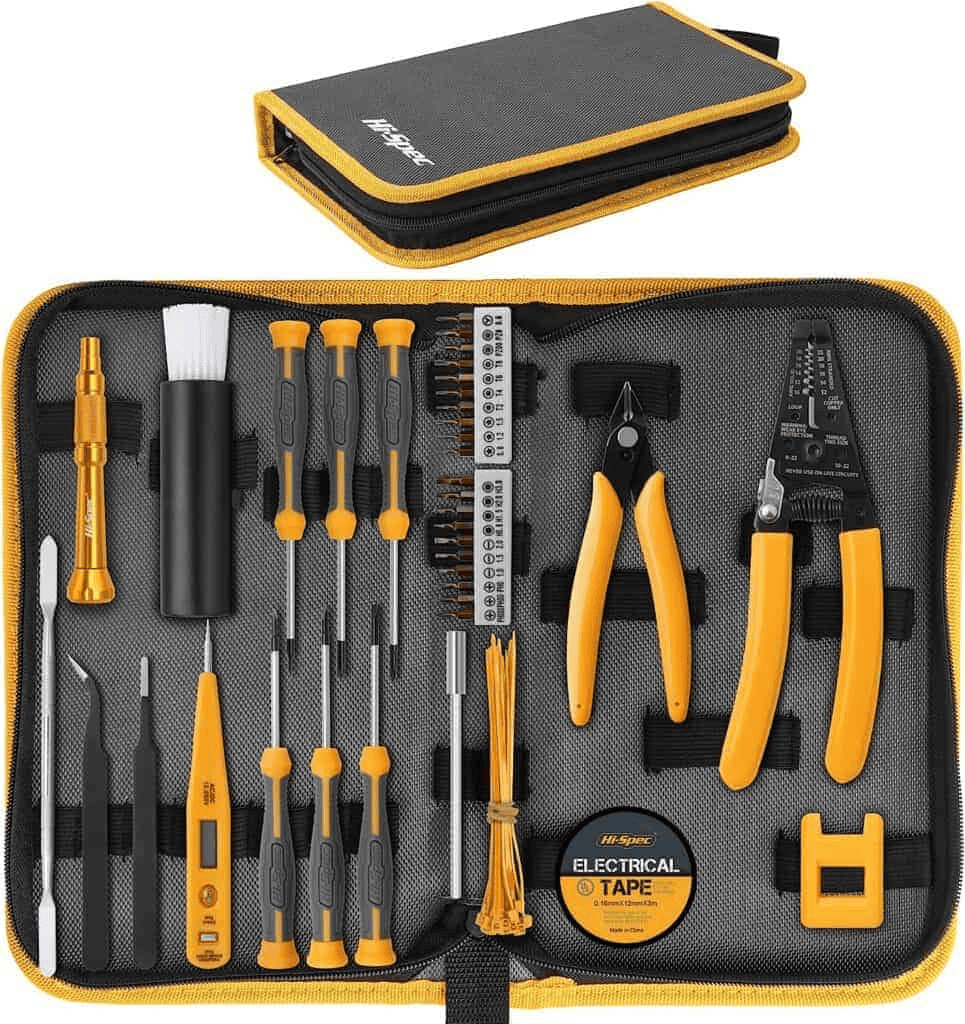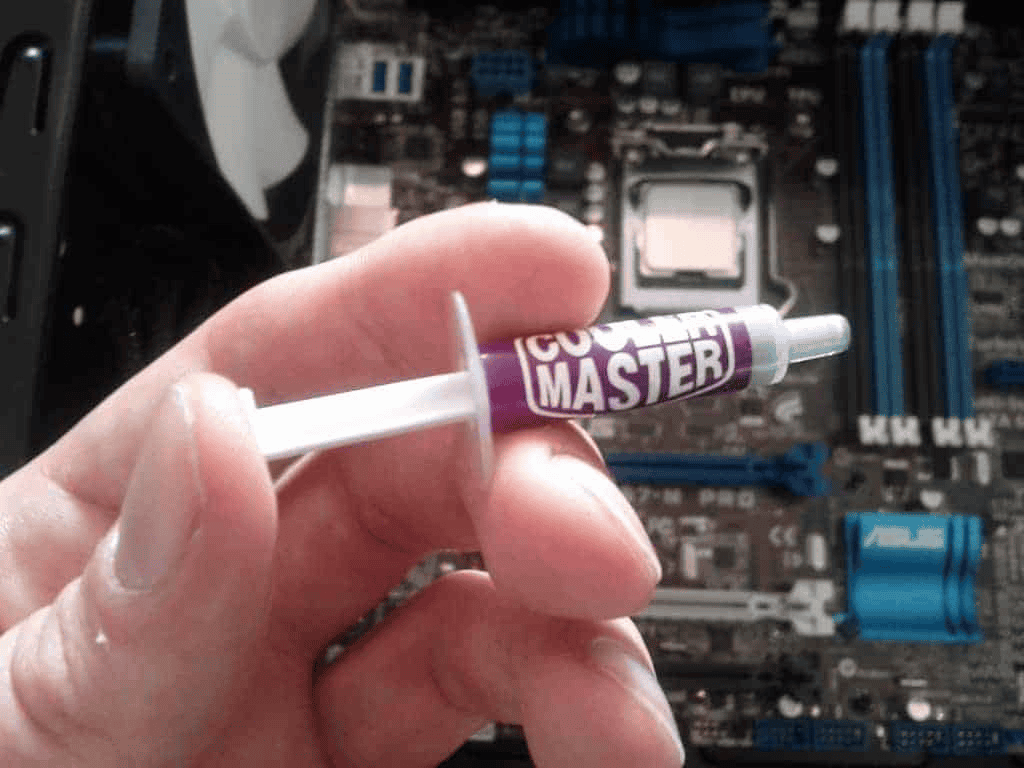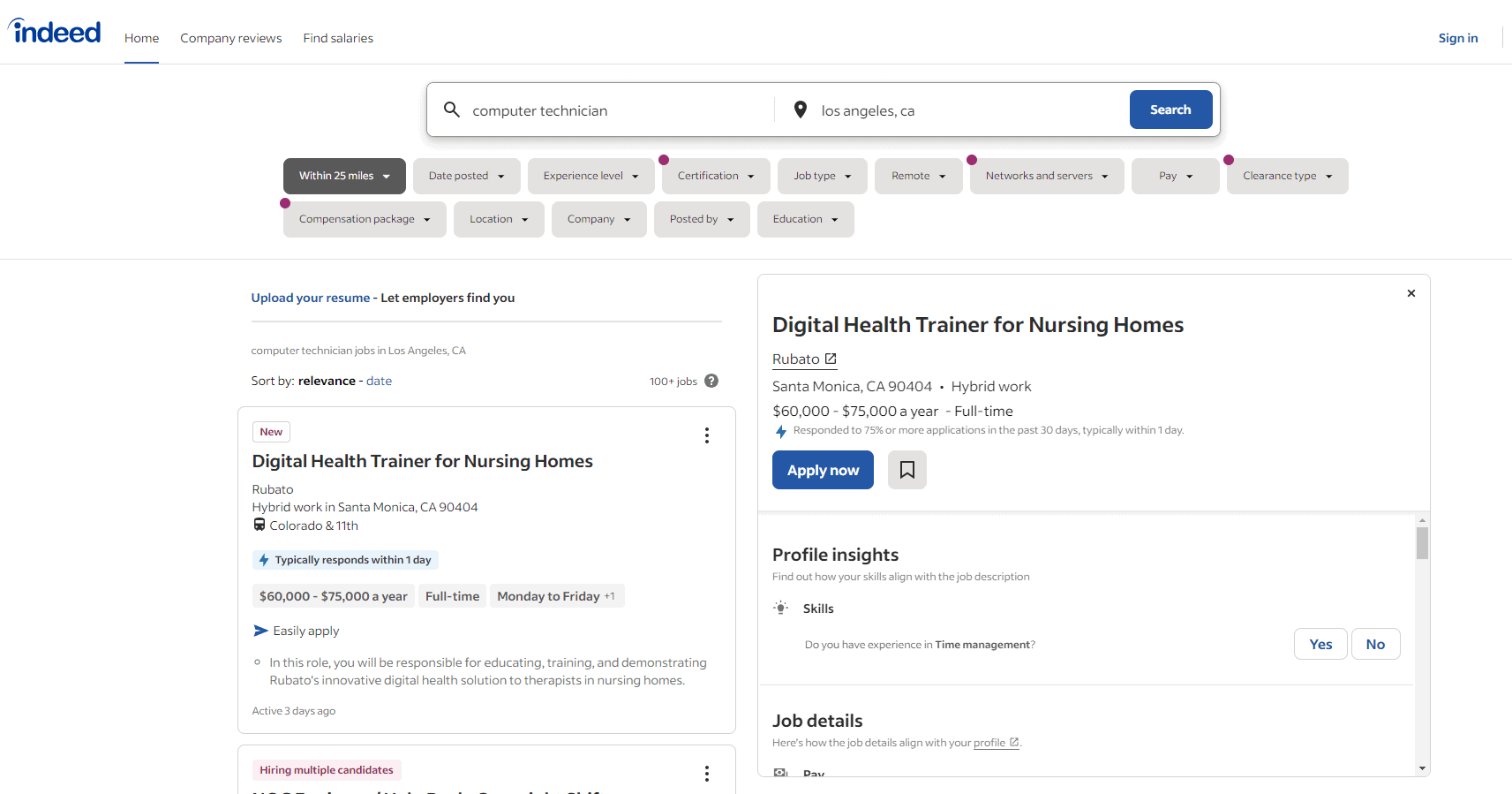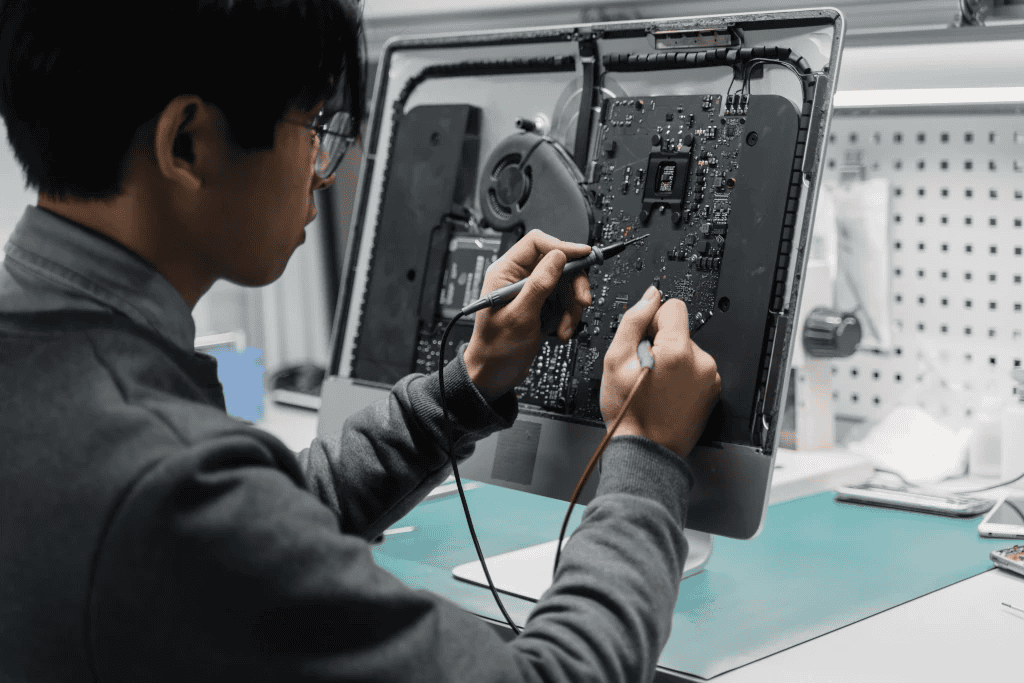Starting a career as a computer repair technician offers a path into the growing field of information technology. Computer repair technicians fix hardware issues, install software, and troubleshoot problems for clients. This role suits tech-savvy individuals who enjoy problem-solving and working with their hands.
To become a computer repair technician, you need a mix of technical skills and customer service abilities. Most employers look for a high school diploma or equivalent. Many technicians also earn certifications like CompTIA A+ to prove their expertise. Hands-on experience fixing computers is valuable, whether through formal training or personal projects.
The job outlook for computer repair technicians is steady. As technology evolves, the need for skilled professionals to maintain and repair devices remains constant. This career offers opportunities for growth into specialized roles or advancement to IT management positions.
Launching Your Computer Repair Technician Career
Computer repair technicians are essential in today’s technology-driven world. They diagnose and fix hardware and software issues, ensuring that computers run smoothly. If you enjoy troubleshooting tech problems and have a knack for problem-solving, this career path might be perfect for you.

Essential Skills and Qualities
To succeed as a computer repair technician, you’ll need a blend of technical skills and personal qualities:
- Technical Proficiency: A strong understanding of computer hardware, software, operating systems, and networking is crucial.
- Problem-Solving Abilities: You’ll need to diagnose issues, identify solutions, and implement them effectively.
- Communication Skills: Clearly explaining technical problems to non-technical clients is essential.
- Patience and Attention to Detail: Computer repair can be intricate work, requiring focus and meticulousness.
Educational Pathways
There are several paths to becoming a computer repair technician:
- Certifications: Industry certifications like CompTIA A+ demonstrate your skills to potential employers.
- Associate’s Degree: An associate’s degree in computer science or a related field provides a solid foundation.
- Bachelor’s Degree: While not always required, a bachelor’s degree can open doors to more advanced roles.
- On-the-Job Training: Some technicians gain experience through apprenticeships or entry-level positions.
Gaining Experience
Hands-on experience is invaluable in this field. Here are some ways to gain it:
- Internships: Seek internships with computer repair shops or IT departments.
- Volunteer Work: Offer your tech support skills to community organizations or non-profits.
- Personal Projects: Build your own computer, troubleshoot issues for friends and family, or experiment with software.

Job Opportunities
Computer repair technicians can find employment in various settings:
| Workplace | Description |
|---|---|
| Repair Shops | Specialize in fixing computers and other devices for individuals and businesses. |
| Retail Stores | Provide tech support and repair services to customers. |
| IT Departments | Maintain and troubleshoot computers within organizations. |
| Freelance | Offer repair services independently to clients. |
Career Advancement
With experience and further education, you can advance your career into roles like:
- IT Support Specialist
- Network Administrator
- Systems Analyst
- Cybersecurity Analyst
Tips for Success
- Stay updated: The tech world evolves rapidly. Keep learning about new technologies and trends.
- Develop strong customer service skills: Communicate effectively and build positive relationships with clients.
- Build a professional network: Connect with other tech professionals and attend industry events.
- Consider specializing: Focus on a specific area like data recovery, network security, or mobile device repair.

Start a Career as a Computer Repair Technician: Steps
Want to turn your tech skills into a rewarding career? Here’s a step-by-step guide to becoming a computer repair technician:
- Assess Your Skills and Interests: Do you enjoy troubleshooting tech problems? Are you patient and detail-oriented? Honest self-assessment is the first step.
- Gain Foundational Knowledge: Learn the basics of computer hardware, software, operating systems, and networking. Online resources, books, and community courses are great starting points.
- Formalize Your Education: Consider pursuing certifications like CompTIA A+, an associate’s degree in computer science, or even a bachelor’s degree for advanced opportunities.
- Get Hands-On Experience: Seek internships, volunteer your skills, or take on personal projects to build practical experience. Real-world troubleshooting is invaluable.
- Build Your Toolkit: Invest in essential tools like screwdrivers, anti-static mats, and diagnostic software. A well-equipped technician is a prepared technician.
- Create a Resume and Portfolio: Highlight your skills, education, and experience. A portfolio showcasing successful repairs can impress potential employers.
- Start Applying for Jobs: Look for positions at repair shops, retail stores, IT departments, or consider freelancing. Tailor your applications to each specific role.
- Never Stop Learning: The tech world is constantly evolving. Stay current with new technologies, trends, and certifications to remain competitive.
Here’s a great place to start to see what the requirements for a computer repair technician job would be in your area:
https://www.indeed.com/jobs?q=computer+technician
Key Takeaways
- Computer repair technicians need technical skills and customer service abilities
- Certifications like CompTIA A+ can boost job prospects
- The field offers steady work with chances for career advancement
Developing the Necessary Skills and Credentials
Becoming a successful computer repair technician requires a mix of technical know-how and soft skills. Building a strong foundation in these areas will set you up for a rewarding career in IT support.
Understanding Basic Computer Components and Systems
A solid grasp of computer parts and how they work together is crucial. Learn about CPUs, RAM, hard drives, and motherboards. Get familiar with different types of computers like desktops, laptops, and tablets. Study various operating systems such as Windows, macOS, and Linux. Practice taking apart and rebuilding computers to understand their inner workings.
Explore networking basics too. Learn about routers, modems, and Wi-Fi setups. This knowledge will help you solve connectivity issues that clients often face.

Acquiring Technical Expertise in Hardware and Software
Develop skills in both hardware and software troubleshooting. Learn to identify and fix common hardware problems like faulty power supplies or bad RAM. Get comfortable using diagnostic tools to pinpoint issues.
On the software side, practice removing viruses and malware. Learn how to reinstall operating systems and recover lost data. Get good at updating drivers and installing software.
Stay current with new tech trends. Read tech blogs and forums to keep up with the latest hardware and software developments.
Building Problem-Solving and Critical Thinking Abilities
Sharp problem-solving skills are key for computer techs. Practice breaking down complex issues into smaller, manageable parts. Learn to think logically and methodically when tackling problems.
Develop a systematic approach to troubleshooting. Start with the simplest possible cause and work your way up to more complex issues. This method saves time and helps find solutions faster.
Try solving practice problems or take online quizzes to sharpen your skills. The more you practice, the better you’ll get at fixing tricky computer issues.
Pursuing Relevant Certifications and Education
While not always required, certifications can boost your career prospects. The CompTIA A+ certification is widely recognized in the IT industry. It covers basics like hardware, networking, and operating systems.
Consider other certifications too. The Google IT Support Professional Certificate is a good option for beginners. Microsoft’s Modern Desktop Administrator Associate certification is useful for those focusing on Windows systems.
A degree isn’t always needed, but it can help. Associate or bachelor’s degrees in IT or computer science can provide a strong foundation. They also teach valuable skills like project management and teamwork.
Enhancing Communication and Customer Service Skills
Technical skills alone aren’t enough. You need to explain complex concepts in simple terms. Practice describing technical issues without using jargon. This skill is crucial when talking to clients who may not be tech-savvy.
Work on your listening skills too. Often, clients struggle to describe their computer problems clearly. You’ll need to ask the right questions to get to the root of the issue.
Learn to manage customer expectations. Be clear about what you can and can’t fix. Always keep clients updated on the progress of their repairs. Good communication builds trust and leads to happy customers.







